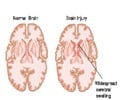Reducing the production of Snail post-brain injury leads to heightened inflammation and amplified cell mortality.

A unique cell population expressing the Epithelial-Mesenchymal Transition-transcription factor Snail moderates microglial and astrocyte injury response
Go to source)
What are Snail Family Proteins?
Snail family proteins, such as Snail/SNAI1 and Slug/SNAI2, are types of transcriptional repressors. They possess a closely preserved C-terminal region housing four (in Snail) and five (in Slug) zinc fingers. This segment plays a crucial role in these proteins binding to the promoters of target genes that contain the E-box sequence. The GW researchers show that changing how much Snail is produced can significantly affect whether the injury starts to heal efficiently or whether there is additional damage.Snail's Role in Brain Injury Response Offers Promising Treatment Avenues
"Our findings reveal the intricate ways the brain responds to injuries,” said senior author Robert Miller, the Vivian Gill Distinguished Research Professor and Vice Dean of the GW School of Medicine and Health Sciences. ”Snail appears to be a key player in coordinating these responses, opening up promising possibilities for treatments that can minimize damage and enhance recovery from neurological injuries."‘Following an injury to the CNS, a cluster of specific cells initiates the production of Snail, a transcription factor or protein associated with the healing process. #braininjury’





Key findings: - This study identifies for the first time a special group of microglial-like cells that produce Snail. Microglial cells are found in the central nervous system.
- Lowering the amount of Snail produced after an injury results in inflammation and increased cell death. During this process the injury gets worse not better and there are fewer connections or synapses between brain cells.
- In contrast, when Snail levels are increased the outcome of brain injury improves–suggesting this protein can help limit the spread of injury-induced damage.
Miller and his team also plan to study the regulation of Snail in diseases like multiple sclerosis. Multiple sclerosis is a disease resulting in damage to myelin, the protective layer insulating nerve fibers in the brain. If drugs targeting Snail could be used to stop that damage, many of the future symptoms of this disease could be eased, he says.
But researchers have years of work to do before new drugs targeting Snail can be tested in clinical trials. The payoff ultimately might be drugs that can lead to accelerated healing for stroke damage, head wounds and even neurodegenerative diseases like dementia.
Reference:
- A unique cell population expressing the Epithelial-Mesenchymal Transition-transcription factor Snail moderates microglial and astrocyte injury responses - (https://academic.oup.com/pnasnexus/article/2/10/pgad334/7308570)















